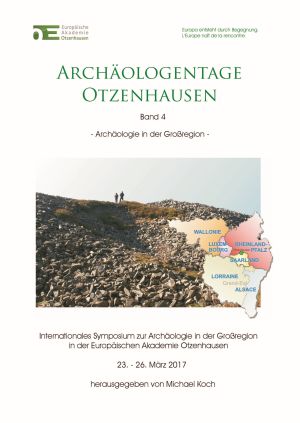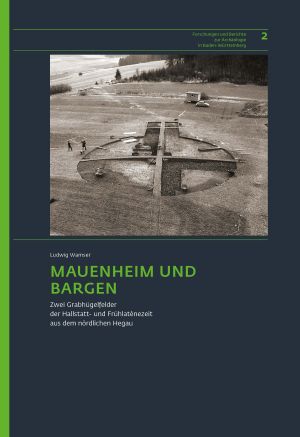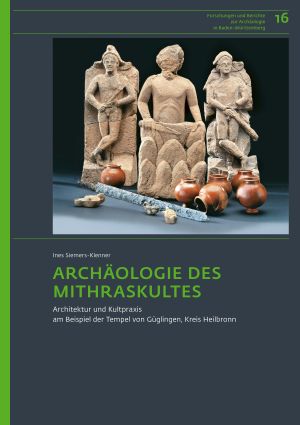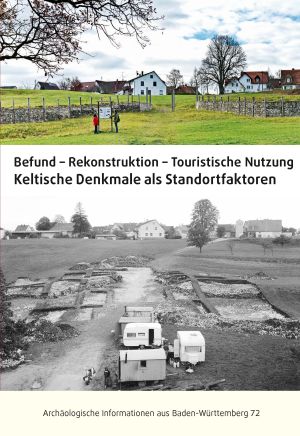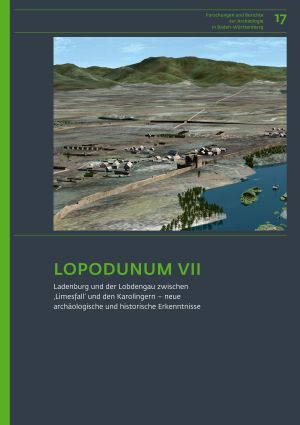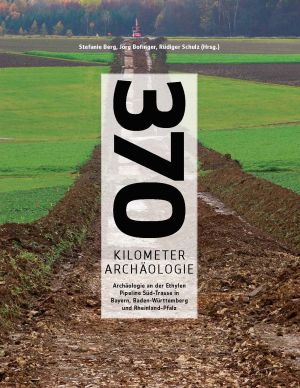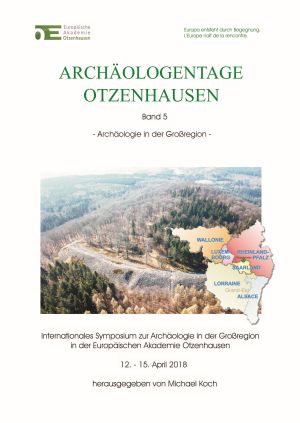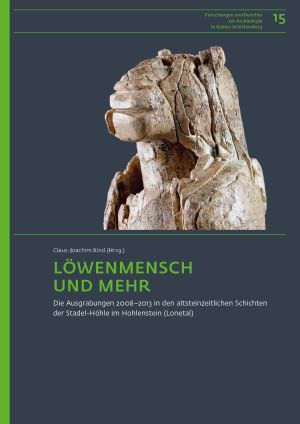Krausse, Dirk
Hemmingen in der Vor- und Frühgeschichte
The small town of Hemmingen, which today has a population of around 7300, is located 15 km north-west of the state capital Stuttgart. It lies in the “Strohgäu”, a landscape characterised by rolling hills and gentle valleys, between the central Neckar valley and the Black Forest foothills. The region's highly fertile loess soils have been used for agriculture since the beginning of the Neolithic some 7500 years ago and throughout all subsequent eras. Numerous finds of settlements of the first farmers as well as traces of the Celts, Romans and Alamanni illustrate thousands of years of settlement history in and around Hemmingen. This booklet is based on a series of lectures of the Local History Association in Hemmingen. In addition to a short outline of the local history of research, it offers a summarising overview of the most important periods of prehistory and early history and the archaeological monuments and finds by which they are represented in Hemmingen.
Archäologie in der Großregion: Beiträge des internationalen Symposiums zur Archäologie in der Großregion in der Europäischen Akademie Otzenhausen vom 23. - 26. März 2017
The Greater Region is traditionally an area with a focus on Celtic and Roman research. On the one hand, certainly, because there is a corresponding archaeological substance here, on the other hand but also because several associations interested in archaeology were already active here in the early 19th century and thus laid the foundation for today's interest in this era. Their work and excavation results shaped to a great extent over a long period of time the image of the "Celts" and "Romans" as it is commonly used. The present volume is now dedicated to one of these important Celtic researchers of the Greater Region for his 80th birthday: Prof. Dr. Alfred Haffner.
Mauenheim und Bargen: Zwei Grabhügelfelder der Hallstatt- und Frühlatènezeit aus dem nördlichen Hegau
The monograph deals with the Hallstatt cemetery of Immendingen-Mauenheim (district of Tuttlingen), which comprises 23 burial mounds and at least 10 small cremation graves between the mounds, and with the necropolis of Engen-Bargen (district of Constance), which consists of five tumuli. Both sites are located about 700 m apart in the northern Hegau, a few kilometres south of the Danube, between the Alps and the Black Forest. The study is based on a dissertation from the 1970s and is supplemented by new research devoted to specific finds and social and economic aspects. Animal grave goods from the tombs were analysed achaeozoologically. Anthropological studies of the skeletons from the Hallstatt period as well as research on mobility and nutritional status of humans and animals contribute to the reconstruction of Iron Age living conditions in south-western Germany.
Germanische Siedlungsspuren des 3. bis 5. Jahrhunderts n. Chr. zwischen Rhein, Neckar und Enz
The period from the 3rd to the 5th century AD brought a radical change to the area of present-day Baden-Württemberg: the limes of the Roman province of Germania Superior was abandoned as a result of political turmoil and military conflicts, and many inhabitants left the region. Subsequently, a more basic Germanic settlement system was established where Roman villages and rural estates had previously existed. Recent excavations provide information about the development of individual sites during this period and the changes in the settlement landscape. Why did some places have a Germanic successor settlement and others not? Were romanised germanic people who already lived in the Roman provinces a nucleus of the occupation of the 3rd to 5th centuries? These and other questions are addressed in the study at hand on the basis of 32 sites from a study area extending form the Rhine plain over the Kraichgau to the middle Neckar region and from the southern foothills of the Odenwald to the Enz valley.
Archäologie des Mithraskultes: Architektur und Kultpraxis am Beispiel der Tempel von Güglingen, Kreis Heilbronn
Extensive excavations in Güglingen in the Zabergäu region led to the discovery of two Mithras temples in 1999 and 2002. The first one was built of stone and had been almost entirely deprived of its furnishings. The second, smaller Mithraeum, on the other hand, preserved large parts of the inventory under its collapsed tiled roof. In this timber-framed building, stone monuments, temple dishes, personal belongings of the worshipers, various votive offerings and liturgical equipment were preserved in a hitherto unique state.
The unique archaeological record not only enabled the reconstruction of the building history of both temples, but also for the first time allowed a deep insight into the previously unknown liturgical practice of the Mithras cult. For example, the finds and features suggest that scenes from the mithraic legend were re-enacted in the temples with the use of special lighting effects. The finds from Mithraeum II confirm the practical execution of initiations in the form of trials of courage or symbolic death experiences, which had been assumed for a long time from written sources. The timber-framed building from Güglingen is also the oldest evidence of the distinctive temple type “Mithraeum” from the time around 115/125 AD and thus lends new momentum to the question of the spread of this cult.
Befund – Rekonstruktion – Touristische Nutzung: Keltische Denkmale als Standortfaktoren
The “Heidengraben” on the Swabian Alb comprises the remains of a Late Celtic fortified settlement of the 2nd and 1st centuries BC. Archaeological finds and remains of ramparts visible above ground illustrate the supra-regional importance and the spatial dimensions of the Celtic oppidum, which is one of the largest in Central Europe.
On the occasion of new plans for the touristic enhancement of the large scale monument “Heidengraben”, an international colloquium was held in Grabenstetten in autumn 2013. The results of this conference are presented in this volume. The contributions deal with central questions of the reconstruction of archaeological features. However, the range of topics is not limited to specialised archaeological problems, but also deals with core aspects of a tourism concept. In this context, numerous experts from various scientific institutions and museums present “best practice” projects from Germany and Austria.
LOPODVNVM VII: Ladenburg und der Lobdengau zwischen ‚Limesfall‘ und den Karolingern
The town of Ladenburg looks back on a rich historical heritage: In the Roman era, Lopodunum was the capital of an extensive municipality, the civitas Ulpia Sueborum Nicrensium, and from the Carolingian period onward, Lobedtenburc is documented as the center of the Lobdengau. For the period in between, written sources are largely missing; all the more important are archaeological features and finds. The most important of these are presented in the volume at hand and embedded in the historical context. For instance, a group of Postumus coins from Ladenburg are presented, new interpretations of the late Roman burgus and the medieval ‘bishop's court’ are discussed, and recent findings on a Carolingian cemetery in the city area are presented. The surroundings of Ladenburg are represented by overviews on the richly equipped early medieval cemeteries of the region and on recent settlement excavations. Critical re-evaluations of written sources as well as historical-archaeological syntheses on the various possible scenarios of the 'Fall of the Limes' and on comparative regions such as the Palatinate in Late Antiquity complete the volume.
370 Kilometer Archäologie - Archäologie an der Ethylen Pipeline Süd-Trasse in Bayern, Baden-Württemberg und Rheinland-Pfalz
Measuring more than 370 km in length, the route of the Ethylene Pipeline South runs through the three states of Bavaria, Baden-Württemberg and Rhineland-Palatinate. Between 2007 and 2011 archaeological excavations were carried out on the EPS route. The number of documented sites is in the hundreds, and more than 100 new discoveries impressively demonstrate that such a project has a literally incisive significance for our cultural landscape. Interesting new discoveries could be made even in supposedly well-investigated landscapes. The temporal span of the investigated sites ranges from the Stone Age to the Modern Age, and the spectrum of archaeological features is similarly complex.
Archäologie in der Großregion: Beiträge des internationalen Symposiums zur Archäologie in der Großregion in der Europäischen Akademie Otzenhausen vom 12. - 15. April 2018
This volume refers to the conference in 2018, where, for current reasons, the topic of "migration" took center stage. For archaeology certainly also has a political dimension, as already suggested by the winged phrase "future needs origin". The phenomena of migration, flight and displacement, as well as the passing on of craft techniques and cultural phenomena through migratory movements are as old as mankind itself. Especially for the greater region with the states of Rhineland-Palatinate, Saarland, Luxembourg, Lorraine, Alsace and Wallonia, this is an important topic.
this is a significant topic.
Löwenmensch und mehr: Die Ausgrabungen 2008–2013 in den altsteinzeitlichen Schichten der Stadel-Höhle im Hohlenstein (Lonetal), Gemeinde Asselfingen, Alb-Donau-Kreis
The Hohlenstein in the Lone Valley (Gem. Asselfingen, Alb-Donau-Kreis) is one of the most important Palaeolithic sites in southern Germany. It became famous in particular for the “Lion Man”, found in 1935 – a unique mammoth ivory carving depicting a hybrid creature from the early Upper Palaeolithic period about 35,000 to 40,000 years ago. The Hohlenstein belongs to a group of caves in the Swabian Alb that have yielded the oldest known evidence of figurative art in the entire history of mankind, and for this reason became UNESCO World Heritage Sites in 2017.
Since the current state of preservation of the layers in the cave was largely unknown, new excavations were carried out between 2008 and 2013 by the State Office for Cultural Heritage Preservation in the Regional Council of Stuttgart. It turned out that both inside the cave and on its forecourt there were still intact layers containing finds. Surprisingly, also new fragments of the Lion Man figure came to light.




